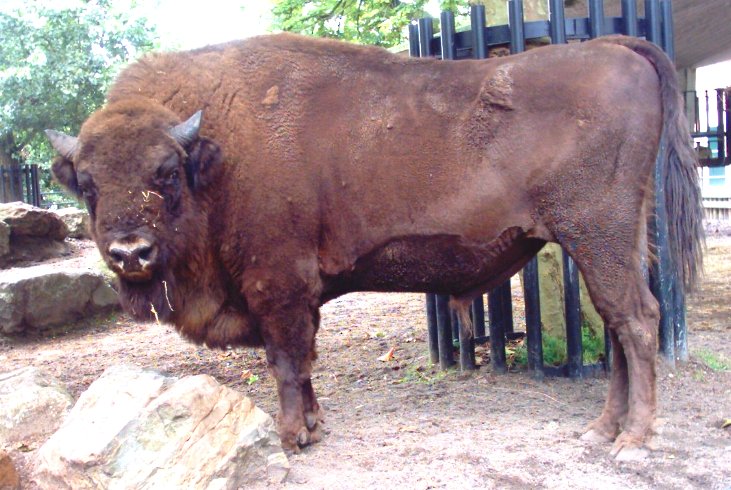

Bison bonasus
European Bison once roamed free in the temperate parts of Europe, but by the 15th century their population started declining. By 1925 only a few dozen individuals had remained in private parks and zoos. Measures were taken for the protection of bison immediately afterwards, and, as a result, there are currently estimated to be around 3200 individuals worldwide, with 200 European Bison breeding centers in 27 countries. All of these animals are descended from 12 individuals. However, Bison bonasus is only found in its native habitat in a few places. Poland in particular has four reserves containing bison, the largest of which is the Bialowieza Forest on the border with Russia.
European bison are smaller than their American counterparts. Their lifespan seems to be around 25 years. During the mating season bulls move between female groups, looking for cows in estrus. When they find a cow, they will often "attend" her for at least a day before mating. Bulls stay near the cow, prevent her from rejoining her herd, and prevent other males from approaching her. Fights between bulls occur during this time, occasionally resulting in serious injuries. Bison need to drink almost every day (though the need varies with the temperature and humidity). During the winter time, bison may obtain their water by eating snow, by breaking the ice over small puddles, or by traveling to streams.
The picture of this bison was taken at the Artis Zoo of Amsterdam, in July 2005.
Genus Bison
Subfamily Bovinae
Family Bovidae
Order Artiodactyla
Subclass Eutheria
Class Mammalia
Subphylum Vertebrata
Phylum Chordata
Kingdom Animalia
Life on Earth
Index